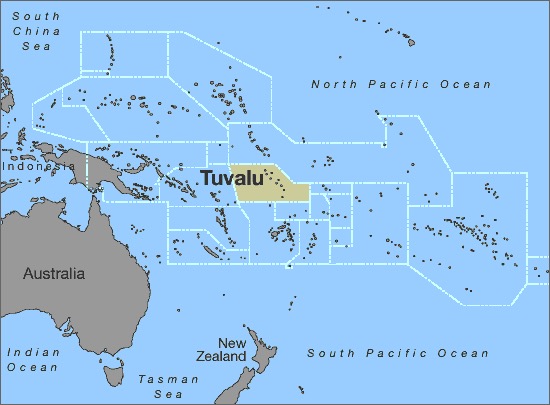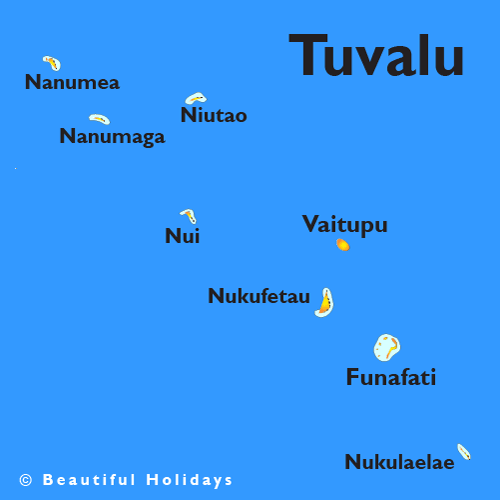Par Prof. Dr. Paul Berth
L’archipel des Tuvalu est constitué de neuf atolls coralliens localisés dans l’Océan Pacifique. Les atolls sont tous habités et la population totale est d’environ 12 000 habitants. Comme le point le plus élevé des atolls est localisé à 4,5 m d’altitude, il semblerait que si la lente montée du niveau marin se poursuit, ces atolls pourraient être très prochainement rayés de la carte…


Lors de la COP23 de décembre 2017, le premier ministre des Tuvalu, Enele Sopoaga, déclara à la conférence : « Oceans is a source of life for Tuvalu. But now it’s being attacked by the impacts of climate change. The coral reefs are bleaching, acidification and also the ocean is causing a lot of erosion. So I think we must continue to insist that those who are causing greenhouse gas and global warming to stop doing that. »
Il est d’ailleurs écrit dans le Chapitre 19 du rapport du groupe de travail II du GIEC que : « Many small island nations are only a few meters above present sea level. These states may face serious threat of permanent inundation from sea-level rise. Among the most vulnerable of these island states are the Marshall Islands, Kiribati, Tuvalu, Tonga, the Federated States of Micronesia, and the Cook Islands (in the Pacific Ocean); Antigua and Nevis (in the Caribbean Sea); and the Maldives (in the Indian Ocean). »
Puis vint un article publié le 9 février 2018 par Paul Kench et deux de ses collaborateurs (Université d’Auckland en Nouvelle Zélande). L’article est en libre accès dans Nature Communications. Voici le titre et l’abstract de cet article :
Patterns of island change and persistence offer alternate adaptation pathways for atoll nations
Sea-level rise and climatic change threaten the existence of atoll nations. Inundation and erosion are expected to render islands uninhabitable over the next century, forcing human migration. Here we present analysis of shoreline change in all 101 islands in the Pacific atoll nation of Tuvalu. Using remotely sensed data, change is analysed over the past four decades, a period when local sea level has risen at twice the global average (~3.90 ± 0.4 mm.yr−1). Results highlight a net increase in land area in Tuvalu of 73.5 ha (2.9%), despite sea-level rise, and land area increase in eight of nine atolls. Island change has lacked uniformity with 74% increasing and 27% decreasing in size. Results challenge perceptions of island loss, showing islands are dynamic features that will persist as sites for habitation over the next century, presenting alternate opportunities for adaptation that embrace the heterogeneity of island types and their dynamics.
Nous ne sommes donc pas prêts de voir disparaître les Tuvalu!